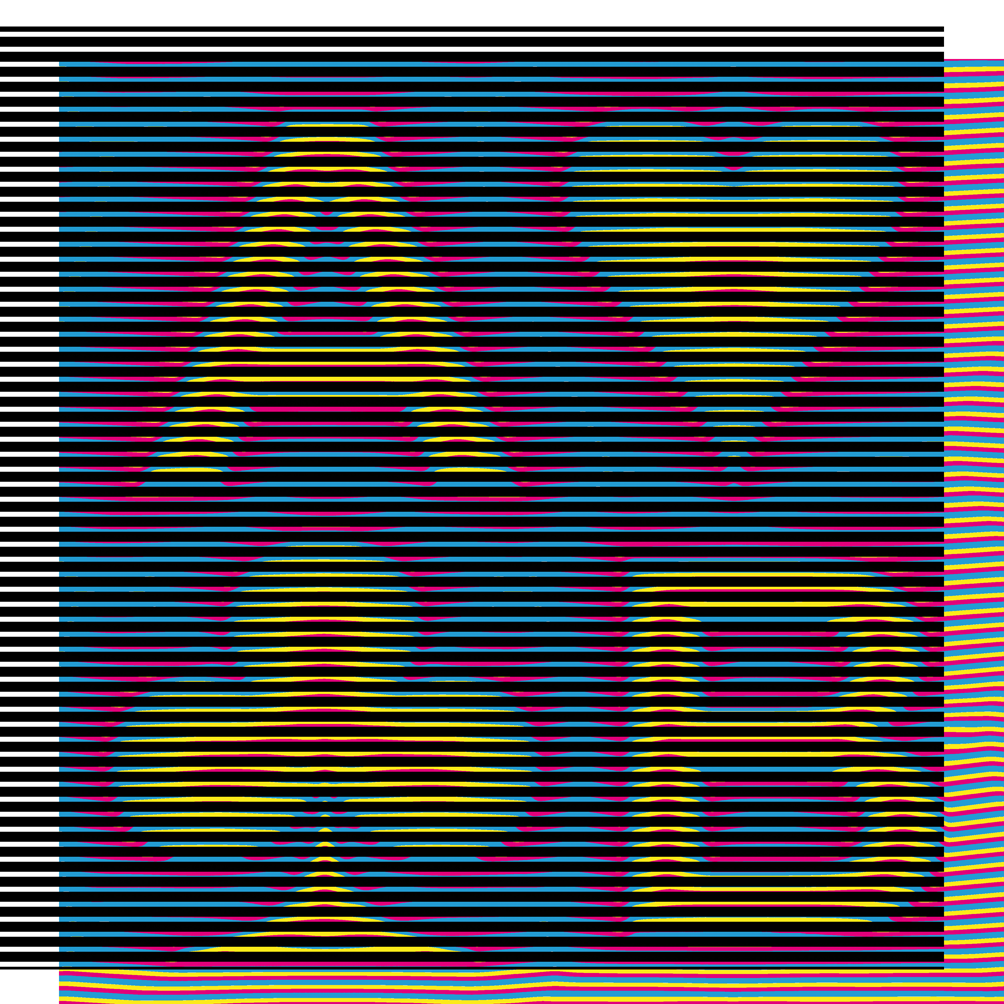Introduction
Secure documents often comprise an information layer that is hard to reproduce. Moiré techniques for the prevention of counterfeiting rely on the superposition of an array of transparent lines or microlenses on top of a base layer containing hidden information. Moirés are advantageous since macroscopic effects are produced by superposing layers of microscopic structures. When generated at very high resolutions, these microstructures become hard to counterfeit.
Working principle and some examples
A simple way of apprehending the moiré phenomenon is seeing it as a sampling problem. The base layer contains some information that the revealer samples. Depending on the way the information is laid out in the base and on the revealer’s design, we can create a moiré with desired characteristics. Three of the main types of moirés that we use are presented in the following table.
 |
 |
 |
| 2D moirés | 1D moirés | Level-line moirés |
Although we work on creating new moiré effects, our main focus is on obtaining dynamic moirés on optically variable devices thanks to microfabrication techniques. The combination of microlenses and other microstructures results in attractive optically variable devices ([Cadarso et al. 2013] and ongoing research).
Applications
While the moiré phenomenon is used in many fields such as art, architecture, interferometry, microscopy, its security applications represent the core of our research. Examples of the use of moiré for security can be found in the new 100, 200, 500 and 1000-krona Swedish banknotes as well as on the new American 100$ banknote.
For any additional information, do not hesitate to contact Thomas Walger.
Keywords: moire
Publications
Please note that the publication lists from Infoscience integrated into the EPFL website, lab or people pages are frozen following the launch of the new version of platform. The owners of these pages are invited to recreate their publication list from Infoscience. For any assistance, please consult the Infoscience help or contact support.
Moiré effects produced by superpositions of micro-lens arrays
Lausanne, EPFL, 2020.Level-line moirés by superposition of cylindrical microlens gratings
Journal of the Optical Society of America. 2020-01-10. Vol. A37, num. 2, p. 209-218. DOI : 10.1364/JOSAA.37.000209.1D moiré shapes by superposed layers of micro-lenses
Optics Express. 2019-12-23. Vol. 27, num. 26, p. 37419-37434. DOI : 10.1364/OE.27.037419.Fabrication of 2D micro-lens arrays for moiré applications
2019-01-11.Fabrication of transparent moiré based optically variable devices
2013-08-16.Micro-moirés combining metallic patterns and micro-lenses
Micro and Nano Engineering (MNE), Braga, Portugal, September 18-22, 2017.Synthesis of superposition shape images by light interacting with layers of lenslets
CH713112; AU2016344585; EP3368332; US10899161; SE543208; RU2018119314; RU2018119314; PL426607; US10286716; CL2018001115; US2018311990; BR112018008671; GB2561731; CN108541238; EP3368332; MX2018005369; KR20180095802; AT519643; DE112016004552; GB201806957; SE1850632; AU2016344585; CA3002906; WO2017072566; US2017113481.
2017.